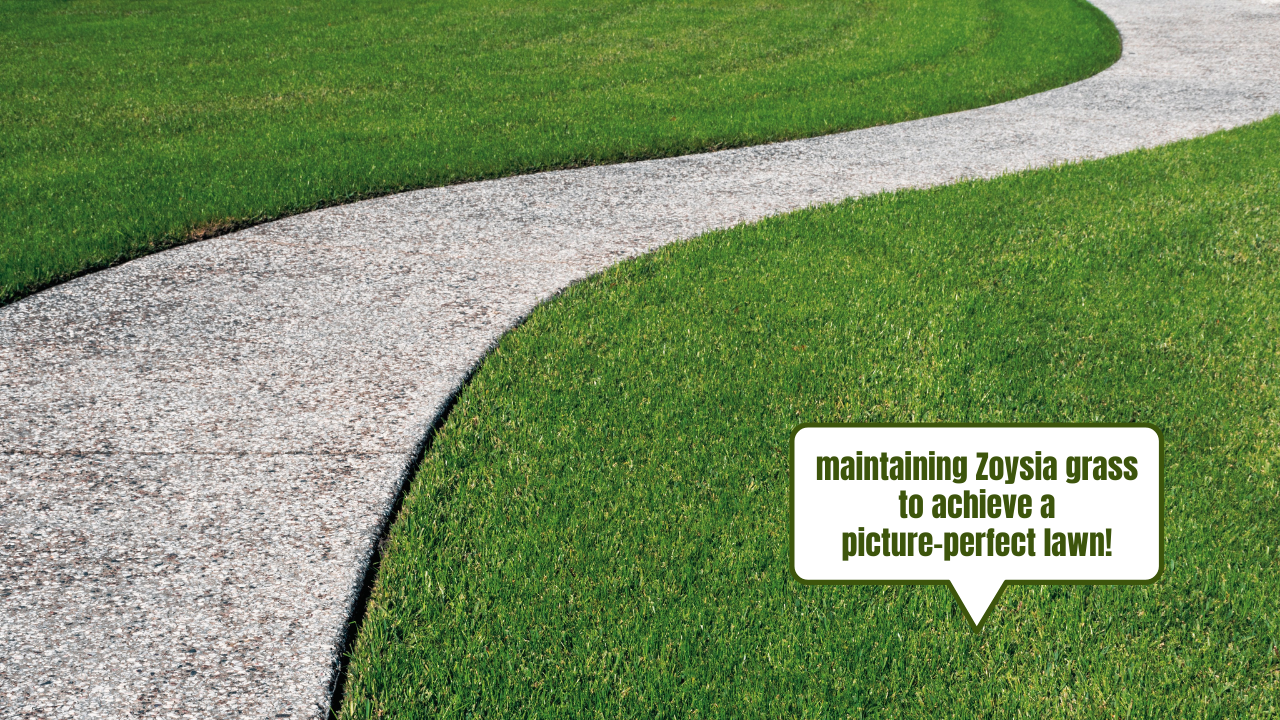We all know how beautiful a Zoysia lawn is, but it requires proper fertilization (using specific types of fertilizer) if you want to keep it healthy and thriving. You’ll quickly find these developed grass types on lawns in the southern states. Zoysia grass grows well in warm regions like Alabama, Florida, and Georgia.
If you’re researching how to fertilize Zoysia grass the right way, we’ve compiled a beginner-friendly guide for your convenience. Read on as we’ve rounded up everything you need to know!
Zoysia Species Basics
Zoysia grass starts growing as a dense turf, and it usually weathers drought and can stand up to heavy traffic. Zoysia is notably thick with stiff blades.
Like other turfgrasses, following routine maintenance for the entire year will help your lawn stay in a lush green condition, especially in the southern U.S. areas. However, since the southern states have diverse climates, sticking to fertilizer maintenance may be challenging.
Starter Fertilizer for Zoysia Grass
Zoysia grass usually starts from existing sod, sprigs, or plugs. That said, you can use a starter fertilizer to help it thrive. This product is worked into the soil prior, so it’s on the ground once the growing grass is placed. It would be best to measure the right amount of starter fertilizer you need for your lawn’s soil chemistry before spreading it all over your planned planting site.
Why do you need a starter fertilizer for your Zoysia grass? It is essential in helping grass seeds sprout and seedlings or sod roots establish themselves fast in new soil. Most starter fertilizers today are formulated to be rich in nitrogen, phosphorous, and potassium, which are the three most essential nutrients to feed your lawn adequately. These nutrients ensure the root grows well once the new grass is placed.
Depending on the particular grass mix, these fertilizers already have a specific balanced formula to give you the nutrients you need for your Zoysia grass. Work the starter fertilizer into the soil, leave it damp, and roll the sod. Most people use a starter fertilizer only for new plantings, but it’s also encouraged to apply this fertilizer on visible bare batches you want to fill in.
Note that starter fertilizers are different than maintenance fertilizers. As such, it’s recommended to test your soil to be 100% certain it is balanced correctly. Avoid over-application of the starter fertilizer, as it may only burn out your new grass.
What type of Fertilizer does Zoysia need?
To properly fertilize your Zoysia grass, you must choose the right fertilizer to work with. Start with selecting nitrogen-based fertilizers. If you’re planning to cover 1,000 square feet, you will need about 4 lbs. to cover it for the entire year.
Ideally, aim for a mix of 15% nitrogen, 0% phosphorus, and about 5 to 10% of potassium. Nitrogen is an essential nutrient for Zoysia grass fertilizers. Meanwhile, potassium is another valuable nutrient that encourages drought and shock resistance. (Related: 7 Best Fertilizers For Healthy Zoysia Grass)
Soil pH and Zoysia
In some cases, Zoysia grass may require additional nutrients if your soil needs a pH change. This usually entails two common soil additives in sulfur and lime.
Consider soil pH testing a crucial part of your annual fertilization strategy. Keep in mind that potassium interacts with the various minerals in the soil, which then changes its pH over time. Suppose a soil test says that it is positive for pH or phosphorus deficiency. In that case, use a 16-4-8 fertilizer to deal with the issue.
Zoysia Grass Fertilization Schedule
Most Zoysia grass grows dormant in the winter, even in warmer climates. Your grass may turn brown and dry out as it waits out the weather. Experts strongly advise against fertilizing the grass in its dormant stage. Doing so may only wake up the grass (and signal it to begin growing). Once the cool weather continues, it may only cause irreversible damage.
You can start your routine Zoysia grass maintenance fertilization in the spring once the grass comes out of dormancy. Start when the lawn is 50% visibly green (around March and May). In the summer, your lawn should be a lush, healthy green. Around June or July (mid-summer), opt to apply one round of fertilizer to maintain the rich green color of your lawn.
Opt to select a slow-release formula fertilizer to protect the lawn from burning out too much at a given time. Always refer to the directions on the manufacturer label to calculate the right amount of fertilizer spread over the lawn area.
How much Fertilizer should I apply to Zoysia?
Three to four pounds of nitrogen every growing season is recommended. The measurement for all fertilizers is per 1,000 square feet. Pesticides, pre-emergents, post-emergents, and soil enhancers can all be included in a fertilizer treatment.
Always follow the application rates and time frames recommended by the manufacturer. Excess fertilizer application to a lawn can result in scorching, burning, and irreversible damage. When there is a drought or other external pressures, it is never a good idea to fertilize a lawn.
How to Maintain Lawn after you have Applied Fertilizer
Zoysia grass must get adequate moisture after fertilization. This is true for any period, but post-application care needs regular watering. This species typically requires between 1 and 1.25 inches of water throughout the week. It's also essential to hydrate the lawn after using pre-emergent products.
This is important because granules must spread, which is impossible if there isn't enough moisture. It can also damage the plant by leaving burn marks on the leaves. To have the best effect, it is recommended to check weather forecasts and fertilize the soil before the rain. When the product enters the earth, it will serve as a barrier between the plants.
Moisture is essential for post-emergent products as well. For the best results, use them on moist grass blades. Through this, granules will bind to the grass weeds. These herbicides absorb through the leaves, so you'll get the best results if you apply them this way.
Always follow the manufacturer's instructions for precise measurements. Keep in mind that all fertilizer measurements are for 1000 square feet. If you're not sure how much to apply, several fertilizer calculator pages on the internet may help you determine the exact quantity for your beautiful yard.
Final Thoughts
Ultimately, Zoysia grass is a crowd-favorite low-growing, sod-forming cultivar. Thanks to its easy maintenance, more homeowners choose full, bright Zoysia grass to achieve their dreams of having an ideal and beautiful lawn.

Like other grass types, keeping your Zoysia grass in its prime condition won’t be an easy feat. You will need to keep a close eye on various pests, as they may easily invade your lawn and ruin the entire visual landscape.
Another factor to be mindful of is the weather condition in your area, so it’s better that you pay close attention to it to make adequate adjustments to your fertilizing techniques. This allows you to keep your lawn beautiful for the entire year easily.

